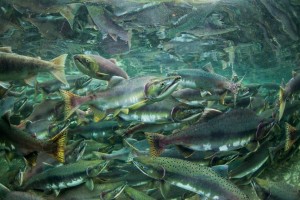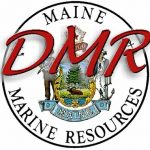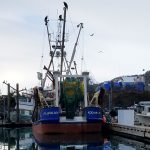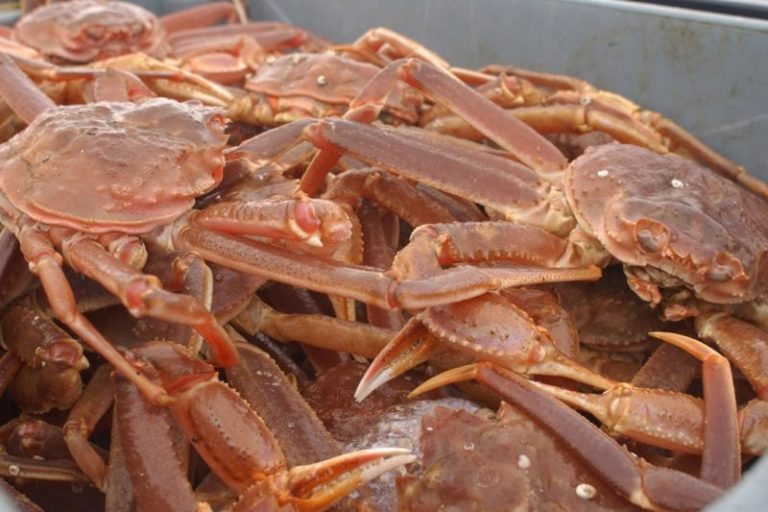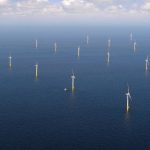Tag Archives: Pink salmon
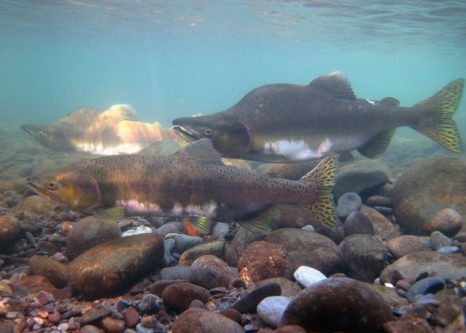
Humpy invasion
While West Coast Americans – Alaskans among them – worry and fret about farmed Atlantic salmon escaping to invade the Pacific Ocean despite decades of failed stocking efforts aimed at helping them do so, the Norwegians, Scots and other Europeans are facing a real and significant problem with an invasive Pacific salmon – the ubiquitous Alaska humpy. The smallest of the Pacific salmon, the humpy – or pink salmon – is by far the most common species in the 49th state. Of the 224.6 million salmon caught in Alaska last year, 63 percent, some 114.6 million, were pinks, according to the Alaska Department of Fish and Game. And Northern Europeans are now worried the highly adaptable and voracious humpy could become a common species in their coastal waters. Blame the Russians. >click to read<15:52
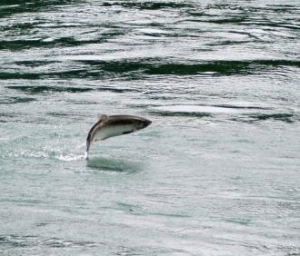
Board of Fisheries denies petition on hatcheries
The members of the Board of Fisheries agree that Pacific salmon hatchery impacts on wild salmon stocks are concerning, but they aren’t clear on what to do to address them yet. At a meeting Monday to consider emergency petitions, the board declined to consider an emergency petition submitted by the Kenai River Sportfishing Association and signed by a variety of Southcentral Alaska sportfishing organizations expressing concern about a hatchery operation permit. Specifically, the petition asked the board to intervene in a permit modification procedure for the Prince William Sound Aquaculture Corporation to increase its pink salmon egg take this season by 20 million. >click to read<15:35
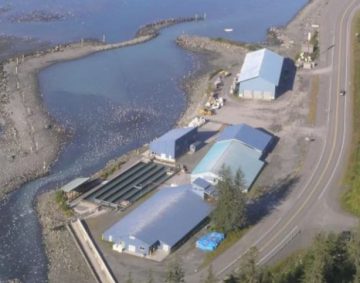
Evermore salmon
More research is needed into the interactions of hatchery and wild fish in Alaska before the Alaska Department of Fish and Game approves the dumping of additional pink salmon fry into Prince William Sound, an advisory committee to state regulators decided here this week. Virgil Umphenour, the chair of the committee and a former member of the state Board of Fisheries, says it is troubling that a state which has long prided itself on best-in-the-world, scientific management of its fisheries is allowing ever more salmon ranching with little clue as to the impacts on wild fish.,, There are obvious impacts, says Nancy Hillstrand of Homer, who has become an activist for wild fish. >click to read<08:45
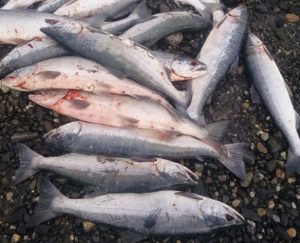
Deadly success?
Twenty-eight years ago, the state of Alaska banned fish farming in favor of salmon ranching. The idea was simple: Catch a bunch of fish, squeeze out their eggs and sperm, mix the two together, hatch the eggs, raise the little fish in a hatchery, dump them in the ocean, wait for them to come back, and net the money. What could possibly go wrong? Maybe this: From 1985 to 1994, before the hatchery program seriously geared up in the Prince William Sound, the commercial catch of sockeye (red) salmon in Cook Inlet averaged about 5.3 million fish per year.>click to read<10:34
Alaska tops nation in total fishing volume for 20th year
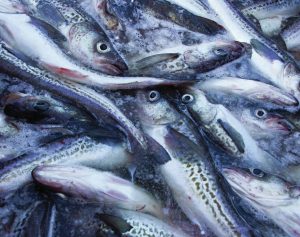 The annual report detailing national and regional economic impacts of U.S. fisheries totaled $9.6 billion in value in 2016 with Alaska as usual producing more than the rest of the nation combined. Alaska produced 58 percent of all landings and for the 20th straight year brought in the highest volume, according to the 2016 Fisheries of the United States report by the National Marine Fisheries Service. The top spot for all ports in the nation went to Dutch Harbor, which brought in 770 million pounds with Alaska pollock accounting for 89 percent of that volume. click here to read the story 16:43
The annual report detailing national and regional economic impacts of U.S. fisheries totaled $9.6 billion in value in 2016 with Alaska as usual producing more than the rest of the nation combined. Alaska produced 58 percent of all landings and for the 20th straight year brought in the highest volume, according to the 2016 Fisheries of the United States report by the National Marine Fisheries Service. The top spot for all ports in the nation went to Dutch Harbor, which brought in 770 million pounds with Alaska pollock accounting for 89 percent of that volume. click here to read the story 16:43
Alaska salmon season a success in global market
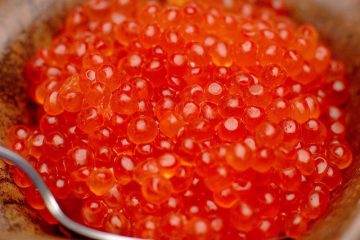 It was a generally good salmon season for Alaska, except for one species. “It was a disastrous year for chinook harvest.” That’s Andy Wink, a seafood economist with the consulting firm McDowell Group. Wink says while king salmon may be the most famous salmon species among Alaskans, it also makes up the lowest total value of all the different commercial salmon species. “Sockeye, pink salmon, chum salmon, those are the species that for the commercial fleet really move the needle in terms of total value.” click here to read the story 19:25
It was a generally good salmon season for Alaska, except for one species. “It was a disastrous year for chinook harvest.” That’s Andy Wink, a seafood economist with the consulting firm McDowell Group. Wink says while king salmon may be the most famous salmon species among Alaskans, it also makes up the lowest total value of all the different commercial salmon species. “Sockeye, pink salmon, chum salmon, those are the species that for the commercial fleet really move the needle in terms of total value.” click here to read the story 19:25
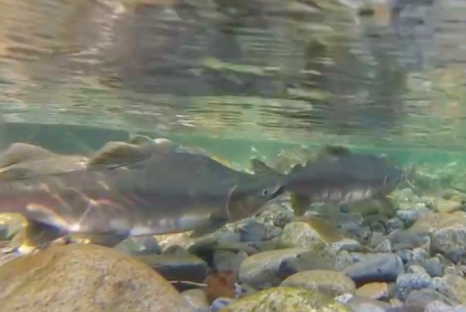
British Columbia: What is behind the sockeye salmon collapse?
The sockeye salmon run this year, is, according to Fisheries and Oceans Canada and other reputable sources, down considerably. The reason for this, depends on who you talk to. Aaron Hill, executive director of Watershed Watch Salmon Society, says part of the problem is the fisheries ministry has dragged its feet on the Cohen Commission recommendations. The Cohen Commission, created in 2009, issued a report in 2012 with 75 recommendations on how Fisheries and Oceans Canada (working with its provincial partner) could monitor and safeguard the Pacific salmon fisheries. click here to read the story 11:43
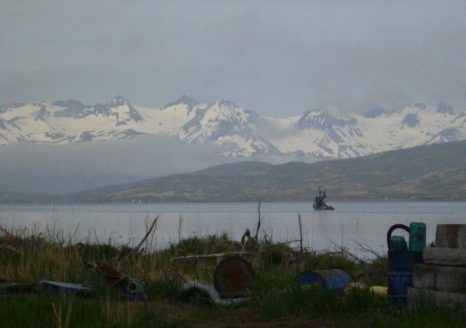
Chignik fishermen slay record six million humpies
The unexpected banner pink year filled a gap after the sockeye run came in well below expectations, and helped push the Chignik salmon fishery past and estimated $15 million in ex-vessel value. An incredible pink salmon run helped the Chignik salmon fishery rebound, after the sockeye run fell well below expectations. The fleet landed just over six million pinks, double the previous biggest harvest since statehood. click here to read the story 08:21
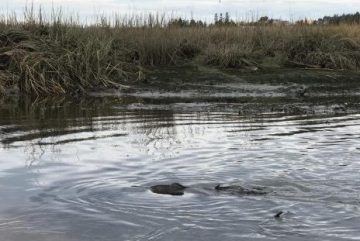
Wild or hatchery fish: opinions vary on large pink return
Pink salmon seem to be showing up everywhere in creeks and along beaches all around Kachemak Bay and the outer coast of the Peninsula. Pinks are returning to systems that have historically never supported salmon. That has caused some head scratching in the fishing community, and there are differing theories as to why pinks are colonizing new systems. This summer was a significant year for commercial fishermen in Lower Cook Inlet. Glen Hollowell, area management biologist for the Alaska Department of Fish and Game, says two million pink salmon were commercially harvested, double the historic average. click here to read the story 09:10
Southern SE could see late pink salmon push
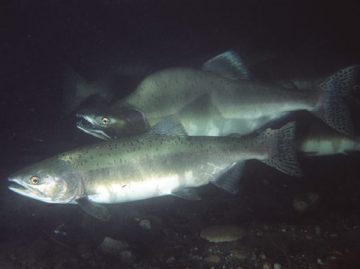 Rain showers expected this weekend for southern Southeast Alaska promise a much needed drink for the limited number of pink salmon that have returned so far this year to the region — after a recent stretch of dry summer heat threatened to zap their freshwater spawning grounds. The fish that amass in the greatest numbers during July and August have delivered an unusual 2017 return mostly to the northern reaches of the Alaska panhandle. Meanwhile, pinks have been surprisingly absent, at least initially, from the historically strong fishing waters of the Ketchikan area and off Prince of Wales Island. What fish have surfaced in southern Southeast have been dealt the added challenge of navigating low-level freshwater streams en route to spawn, namely on Prince of Wales Island. click here to read the story 08:34
Rain showers expected this weekend for southern Southeast Alaska promise a much needed drink for the limited number of pink salmon that have returned so far this year to the region — after a recent stretch of dry summer heat threatened to zap their freshwater spawning grounds. The fish that amass in the greatest numbers during July and August have delivered an unusual 2017 return mostly to the northern reaches of the Alaska panhandle. Meanwhile, pinks have been surprisingly absent, at least initially, from the historically strong fishing waters of the Ketchikan area and off Prince of Wales Island. What fish have surfaced in southern Southeast have been dealt the added challenge of navigating low-level freshwater streams en route to spawn, namely on Prince of Wales Island. click here to read the story 08:34
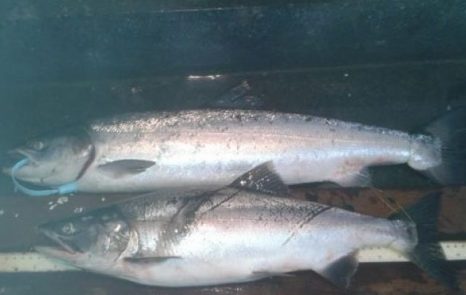
A salmon rare to this part of the world has been caught in another Donegal river
A salmon rare to this part of the world has been caught on the River Crana in Buncrana. The Pink Salmon (also known as a Humpback Salmon) was landed by well-known local angler Mickey McGrory. Abiding by the law, the fish was handed over to Irish Fisheries Ireland (IFI) inspector Peter Kelly. Pat Kane, from the Buncrana Anglers Association, said Pink Salmon in Irish waters was “very rare.” He added: “Nobody knows when the last one would have been caught, although there are ‘rumors’ one was landed by a Greencastle trawler in Lough Foyle in the 1980s. Anglers in the south of the county recently caught the rare salmon in the Drowes river. click here to read the story 14:16
A “mystery” – Pink Salmon warning after species found in Irish rivers
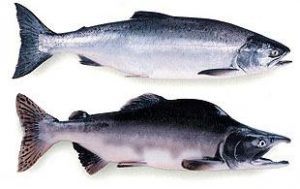 A non-native species of salmon has been found in rivers along the west coast of Ireland, causing concern among Irish fishing authorities. Inland Fisheries Ireland said the pink salmon, which are of Pacific origin, were found in rivers in Counties Galway, Mayo and Donegal. The fishing board said it was concerned about the impact the fish may have on Ireland’s Atlantic species. The pink salmon was also found earlier this month in Scotland. Pink Salmon, also known as humpback salmon, originate from the west coasts of the United States, Canada and northern Asia. click here to read the story 09:32
A non-native species of salmon has been found in rivers along the west coast of Ireland, causing concern among Irish fishing authorities. Inland Fisheries Ireland said the pink salmon, which are of Pacific origin, were found in rivers in Counties Galway, Mayo and Donegal. The fishing board said it was concerned about the impact the fish may have on Ireland’s Atlantic species. The pink salmon was also found earlier this month in Scotland. Pink Salmon, also known as humpback salmon, originate from the west coasts of the United States, Canada and northern Asia. click here to read the story 09:32
Prince William Sound’s pink salmon run shows up late, harvest is underway
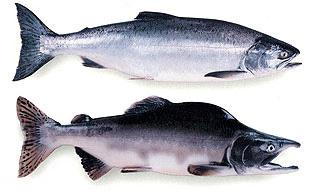 Up until Monday, numbers of pink salmon returning to Prince William Sound looked like they may be a repeat of last year’s dismal run, but the fish are beginning to show up and the harvest is underway. “On Monday, the common property fishery took about 2.5 million fish. Yesterday, it’s looking about 1.2 million,” Charles Russel said, Alaska Fish and Game’s Area Management Biologist for the Prince William Sound area. “Today, initial reports say that fisheries may be close to yesterday, but we’re a little bit behind, but still catching good numbers of fish.” The sudden pick up will have seiners breathing a sigh of relief after last year’s harvest, which was among the worst on record. The federal government officially declared the run in Prince William Sound and others around the state a disaster in January. click here to read the story 08:51
Up until Monday, numbers of pink salmon returning to Prince William Sound looked like they may be a repeat of last year’s dismal run, but the fish are beginning to show up and the harvest is underway. “On Monday, the common property fishery took about 2.5 million fish. Yesterday, it’s looking about 1.2 million,” Charles Russel said, Alaska Fish and Game’s Area Management Biologist for the Prince William Sound area. “Today, initial reports say that fisheries may be close to yesterday, but we’re a little bit behind, but still catching good numbers of fish.” The sudden pick up will have seiners breathing a sigh of relief after last year’s harvest, which was among the worst on record. The federal government officially declared the run in Prince William Sound and others around the state a disaster in January. click here to read the story 08:51
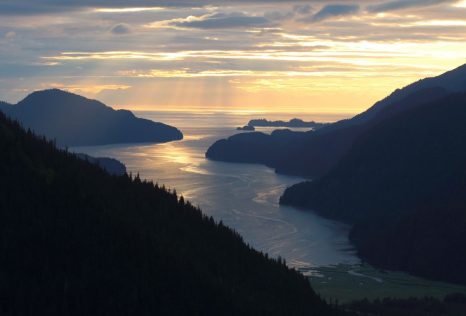
Too many pink salmon in Kachemak Bay?
Tucked into a narrow fjord on the south side of Kachemak Bay is a small lagoon, 700 feet wide, and only a couple thousand feet long. At low tide, a salty trickle connects it to the ocean. At high tide, at the height of the summer, treble hooks fly between a flurry of skiffs as salmon snaggers circle the net pens in the center of the lagoon. Seines scoop up tens of thousands of fish in an attempt to pay for the hatchery, as hatchery operators collect eggs from the fish that swarm the creek. A few weeks later, carcasses rot, eggs incubate and Tutka Lagoon fades back into relative obscurity. Until this year, that is, when a wave of controversy spilled out through that narrow channel like the 100 million pink salmon they hope to release, flooding across Kachemak Bay State Park to Homer, up Cook Inlet, and down to Juneau, prompting the governor to send a fleet of commissioners to brace against the wave. click here to read the story 09:03
Alaska Pink Salmon Fishery Set To Rank as Worst in 20 Years
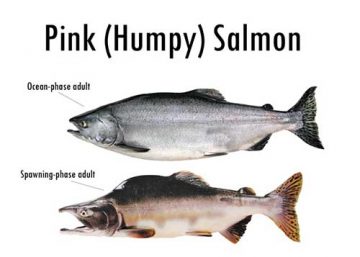 Alaska’s 2016 pink salmon fishery is set to rank as the worst in 20 years by a long shot, and the outlook is bleak for all other salmon catches except sockeyes. “Boy, sockeye is really going to have to carry the load in terms of the fishery’s value because there’s a lot of misses elsewhere,” said Andy Wink, a fisheries economist with the Juneau-based McDowell Group. The historical peaks of the various salmon runs have already passed and the pink salmon catch so far has yet to break 35 million on a forecast of 90 million. That compares to a harvest of 190 million pinks last year. Weekly tracking through August 15 shows the pace of the Chinook salmon harvest (341,000) is down 42 percent versus last year in net fisheries, cohos (under 2 million) are down 20 percent, and the chum catch (12 million) is down 25 percent. Read the article here 14:42
Alaska’s 2016 pink salmon fishery is set to rank as the worst in 20 years by a long shot, and the outlook is bleak for all other salmon catches except sockeyes. “Boy, sockeye is really going to have to carry the load in terms of the fishery’s value because there’s a lot of misses elsewhere,” said Andy Wink, a fisheries economist with the Juneau-based McDowell Group. The historical peaks of the various salmon runs have already passed and the pink salmon catch so far has yet to break 35 million on a forecast of 90 million. That compares to a harvest of 190 million pinks last year. Weekly tracking through August 15 shows the pace of the Chinook salmon harvest (341,000) is down 42 percent versus last year in net fisheries, cohos (under 2 million) are down 20 percent, and the chum catch (12 million) is down 25 percent. Read the article here 14:42
Poor production of pink salmon mystifies
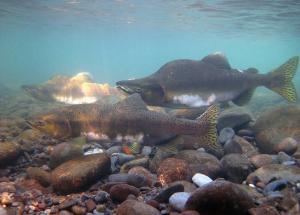 Weather patterns contributed to a screwy sockeye run in 2015, and this year the same is happening to pinks, the second-largest salmon harvest in Alaska. In 2016, commercial fishermen have only harvested 8 million pinks as of Aug. 15 in Prince William Sound, the state’s largest pink run. Only one-third are hatchery fish, a marked turn from last years’ massive pink haul of 96 million in the Sound, a 20-year record-breaker over 93 million pinks in 2003. Of these, 80 percent were hatchery fish. Southeast Alaska’s run is doing as badly with only 13.4 million harvested, less than half the already-substandard forecast of 34 million fish. Dan Gray, the area management biologist for Southeast Alaska’s commercial fisheries, said he and fishermen both are stumped as to the poor run’s nature, but seem to think the warm Gulf of Alaska “blob” of 2015, which raised surface temperatures 2 degrees Celsius, has some impact. “Maybe it wasn’t the best thing for high sea survival,” he said. Hope for a midseason pickup in returns is dim. Read the rest here 21:07
Weather patterns contributed to a screwy sockeye run in 2015, and this year the same is happening to pinks, the second-largest salmon harvest in Alaska. In 2016, commercial fishermen have only harvested 8 million pinks as of Aug. 15 in Prince William Sound, the state’s largest pink run. Only one-third are hatchery fish, a marked turn from last years’ massive pink haul of 96 million in the Sound, a 20-year record-breaker over 93 million pinks in 2003. Of these, 80 percent were hatchery fish. Southeast Alaska’s run is doing as badly with only 13.4 million harvested, less than half the already-substandard forecast of 34 million fish. Dan Gray, the area management biologist for Southeast Alaska’s commercial fisheries, said he and fishermen both are stumped as to the poor run’s nature, but seem to think the warm Gulf of Alaska “blob” of 2015, which raised surface temperatures 2 degrees Celsius, has some impact. “Maybe it wasn’t the best thing for high sea survival,” he said. Hope for a midseason pickup in returns is dim. Read the rest here 21:07
Plethora of pinks gives Alaska fishermen pause
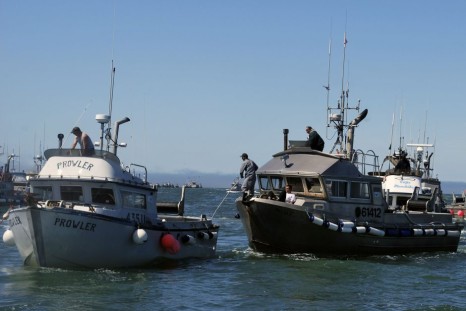 Alaska’s pink salmon catch is pushing 180 million fish, making it the second largest harvest ever; the 219 million pinks of 2013 remains the record. Alaska’s humpy haul has been pushed by the record production of three regions – more than 15 million pinks were taken from the Alaska Peninsula, compared to less than 1 million last year. Kodiak’s record pink catch is nearing 30 million, triple last year’s take. And Prince William Sound’s harvest has already topped 97 million pink salmon. All that fish goes into a competitive global market and, in a word, the pink market stinks. Read the rest here 12:14
Alaska’s pink salmon catch is pushing 180 million fish, making it the second largest harvest ever; the 219 million pinks of 2013 remains the record. Alaska’s humpy haul has been pushed by the record production of three regions – more than 15 million pinks were taken from the Alaska Peninsula, compared to less than 1 million last year. Kodiak’s record pink catch is nearing 30 million, triple last year’s take. And Prince William Sound’s harvest has already topped 97 million pink salmon. All that fish goes into a competitive global market and, in a word, the pink market stinks. Read the rest here 12:14
ADF&G figures show commercial pinks slow to arrive in Southeast
 Southeast Alaska fishermen have pulled in almost 10 million salmon so far this summer even as the pace of fishing remains below five-year averages, according to the Alaska Department of Fish and Game. On Sunday, ADF&G reported seiners had hauled in 4.85 million pink salmon and 1.85 million chum salmon in the season to date. Gillnet boats brought in another 570,000 pinks and 1.5 million chum. While those figures sound impressive, Fish and Game has forecasted an excellent pink harvest of 58 million fish. Purse seining captures most of the pink salmon in Southeast. Read the rest here 14:46
Southeast Alaska fishermen have pulled in almost 10 million salmon so far this summer even as the pace of fishing remains below five-year averages, according to the Alaska Department of Fish and Game. On Sunday, ADF&G reported seiners had hauled in 4.85 million pink salmon and 1.85 million chum salmon in the season to date. Gillnet boats brought in another 570,000 pinks and 1.5 million chum. While those figures sound impressive, Fish and Game has forecasted an excellent pink harvest of 58 million fish. Purse seining captures most of the pink salmon in Southeast. Read the rest here 14:46
Southeast’s salmon season begins ramping up as pink harvests start rise
 Southeast Alaska’s first king salmon troll opening of the summer has come and gone, and now the seiners are about the take center stage. Last week, fishermen caught 600,000 pink salmon, according to figures provided by the Alaska Department of Fish and Game, and that figure is expected to rise each week until the first full week of August. Pink salmon run in a two-year cycle, and 2013 brought an unprecedented harvest of 95 million pink salmon in Southeast, more than any since large-scale commercial harvesting began in the late 1800s. Read the rest here 14:16
Southeast Alaska’s first king salmon troll opening of the summer has come and gone, and now the seiners are about the take center stage. Last week, fishermen caught 600,000 pink salmon, according to figures provided by the Alaska Department of Fish and Game, and that figure is expected to rise each week until the first full week of August. Pink salmon run in a two-year cycle, and 2013 brought an unprecedented harvest of 95 million pink salmon in Southeast, more than any since large-scale commercial harvesting began in the late 1800s. Read the rest here 14:16
PInks are out competing sockeye salmon for food at sea, report says
 Growing numbers of pink salmon are out competing sockeyes for food in the ocean, causing the reds to grow slower and smaller. That’s the claim of a new study by Seattle and British Columbia researchers, who say the race for food ultimately affects sockeye abundance and survival. Greg Ruggerone is a senior scientist at Natural Resources Consultants in Seattle and study co-author. He says it was aimed originally at finding causes for declining sockeye runs at British Columbia’s Fraser River in 2009. Audio, Read the rest here 18:34
Growing numbers of pink salmon are out competing sockeyes for food in the ocean, causing the reds to grow slower and smaller. That’s the claim of a new study by Seattle and British Columbia researchers, who say the race for food ultimately affects sockeye abundance and survival. Greg Ruggerone is a senior scientist at Natural Resources Consultants in Seattle and study co-author. He says it was aimed originally at finding causes for declining sockeye runs at British Columbia’s Fraser River in 2009. Audio, Read the rest here 18:34
Pink salmon populations augmented by hatchery programs hurt sockeye returns, study finds
 Nations around the Pacific Ocean may have to cap the number of hatchery salmon they release if sockeye salmon runs are to return to sustainable levels, according to a new study. Record high numbers of pink salmon in the North Pacific coincided with the disastrously small 2009 Fraser River sockeye return, while the unexpectedly large 2010 sockeye return interacted with 40-per-cent fewer pinks, said Brendan Connors, co-author of the article published by the Canadian Journal of Fisheries and Aquatic Sciences. Read the rest here 12:34
Nations around the Pacific Ocean may have to cap the number of hatchery salmon they release if sockeye salmon runs are to return to sustainable levels, according to a new study. Record high numbers of pink salmon in the North Pacific coincided with the disastrously small 2009 Fraser River sockeye return, while the unexpectedly large 2010 sockeye return interacted with 40-per-cent fewer pinks, said Brendan Connors, co-author of the article published by the Canadian Journal of Fisheries and Aquatic Sciences. Read the rest here 12:34
Bristol Bay fishermen poised to pass on pinks – The price for pinks? About 28 cents per pound
 “I haven’t made up my mind yet about pinks, but I’ll tell you, if it was a buck a pound, you bet I’d be out there.” said Fritz Johnson. Prices for pinks are down because of too much inventory, mostly canned, that has yet to be consumed on the world market. Some of that product has been sitting around for years. But there are indications that the situation may be improving. Read more here 19:16
“I haven’t made up my mind yet about pinks, but I’ll tell you, if it was a buck a pound, you bet I’d be out there.” said Fritz Johnson. Prices for pinks are down because of too much inventory, mostly canned, that has yet to be consumed on the world market. Some of that product has been sitting around for years. But there are indications that the situation may be improving. Read more here 19:16
Too Many Salmon in the Sea, Pacific Study Hints – Burgeoning numbers of pink salmon may threaten the food supply of young seabirds.
 Tied to rising ocean temperatures in the Bering Sea and North Pacific that spurred the growth of the prey of salmon and seabirds alike, the “much larger than previously known” impact of pink salmon is reported in a new Proceedings of the National Academy of Sciences report. Read more here 17:32
Tied to rising ocean temperatures in the Bering Sea and North Pacific that spurred the growth of the prey of salmon and seabirds alike, the “much larger than previously known” impact of pink salmon is reported in a new Proceedings of the National Academy of Sciences report. Read more here 17:32
Southeast AK pink salmon catch for 2014 to be “average”
 The Southeast Alaska pink salmon harvest in 2014 is predicted to be in the average range, with a point estimate of 22 million fish (80% confidence interval: 8–36 million fish). more@fishradio
The Southeast Alaska pink salmon harvest in 2014 is predicted to be in the average range, with a point estimate of 22 million fish (80% confidence interval: 8–36 million fish). more@fishradio
Buckley Diversion Dam: Army Corps foot-dragging damming pink salmon to a cruel fate
 To date, the Corps of Engineers has shamelessly dragged its feet despite the fact that NOAA’s Fisheries Service called in 2007 for Buckley Dam to be modernized to ensure that the dam — and the Corps — are in compliance with the Endangered Species Act. more@thenewstribune 11:45
To date, the Corps of Engineers has shamelessly dragged its feet despite the fact that NOAA’s Fisheries Service called in 2007 for Buckley Dam to be modernized to ensure that the dam — and the Corps — are in compliance with the Endangered Species Act. more@thenewstribune 11:45
Pink catches set records; AK 2013 salmon season on track for all time high! This is Fish Radio. I’m Laine Welch
 Alaska’s pink salmon catch by yesterday neared 170 million – blowing past the 161 million record set in 2005 – and millions more humpies are still swarming in. listen@alaskafishradio 17:17
Alaska’s pink salmon catch by yesterday neared 170 million – blowing past the 161 million record set in 2005 – and millions more humpies are still swarming in. listen@alaskafishradio 17:17
Pink harvest could be record number
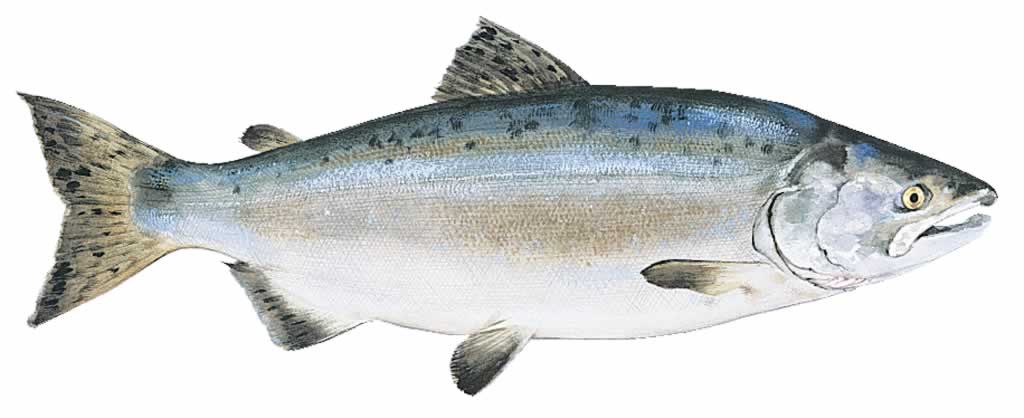
Alaska’s preliminary commercial salmon harvest reached 186,202,000 fish on Aug. 13, leaving the preseason forecast of 178.8 million salmon in the dust, as the humpy catch alone soared to over 139 million and appeared heading for a record. more@thecordobatimes
Laine Welch: Pink salmon catch likely to shatter forecast
 With pink salmon coming in stronger than expected, Alaska’s salmon catch this summer is poised to blow past the pre-season forecast of 179 million fish. “We are going to be short on sockeyes by 5 million or so, and we’re probably not going to make the chum salmon numbers either. So we’ll have to go over with pinks, but at the rate things are going, that is entirely possible,” said Geron Bruce, deputy director of Fish and Game’s Commercial Fisheries division more@adn
With pink salmon coming in stronger than expected, Alaska’s salmon catch this summer is poised to blow past the pre-season forecast of 179 million fish. “We are going to be short on sockeyes by 5 million or so, and we’re probably not going to make the chum salmon numbers either. So we’ll have to go over with pinks, but at the rate things are going, that is entirely possible,” said Geron Bruce, deputy director of Fish and Game’s Commercial Fisheries division more@adn





